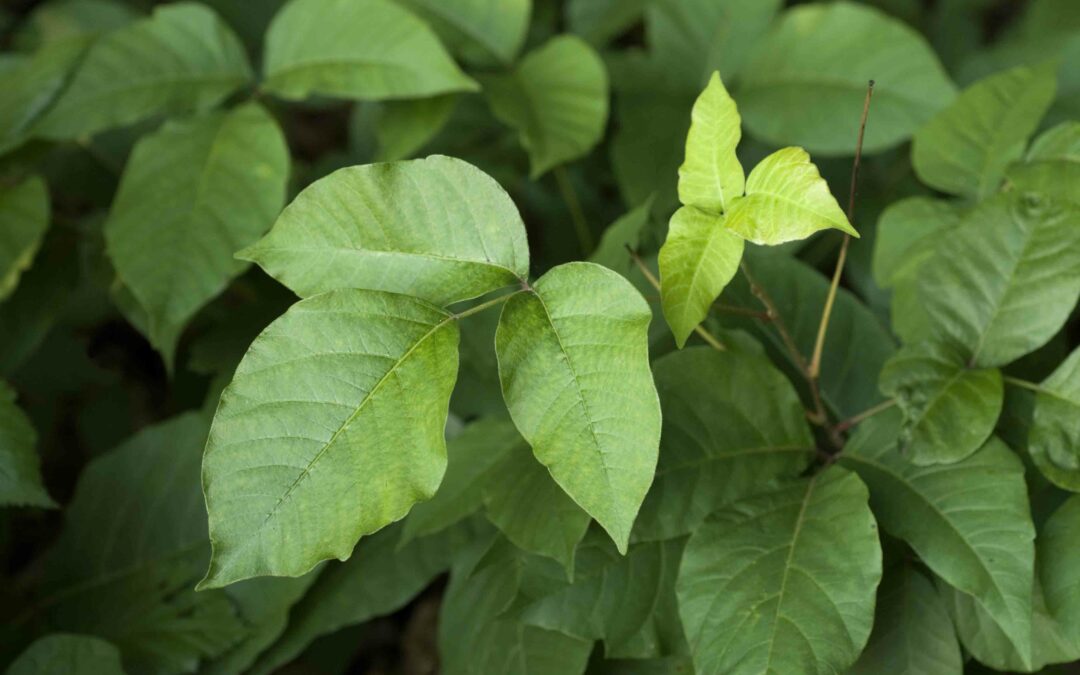It’s that time of the year when we begin to see a number of cases involving the great outdoors. In addition to allergies that many suffer this time of year due to increased pollen counts in the air, the spring also brings out the seasonal flora on the ground, some of which can be a problem for those susceptible to certain compounds in the plant. While there are a number of plants that can cause skin reactions, we are talking mostly about poison ivy.
Poison ivy, poison oak and poison sumac release an oil known as urushiol, when the leaf or other plant parts are bruised, damaged, or burned. When the oil gets on your skin an allergic reaction begins. In this case, we call it contact dermatitis. It occurs in most exposed people as an itchy red rash with bumps or blisters. Exposure to just a small amount of urushiol, (less than one grain of table salt), typically causes a rash in 80 to 90 percent of adults. Burning poison ivy can cause airborne exposure to the lungs and can be quite serious.
The biggest myth we run into about poison ivy, (which is the prevalent culprit in this area) is that it is contagious. Unless you manage to transfer the oil to another, it’s impossible to pass along the rash that comes with exposure. It is possible to pick up the rash from plant oil that may have stuck to clothing, pets, garden tools and other items that have come in contact with these plants. The plant oil lingers (sometimes for years) on virtually any surface until it’s washed off with water or rubbing alcohol.
The rash occurs only where the plant oil has touched the skin, so a person with poison ivy can’t spread it on the body by scratching unless you still have urushiol on your hands, or under your fingernails. We’ve seen patients who are convinced the rash is spreading because it appeared over time instead of all at once. What actually happens is – the plant oil is absorbed at different rates on specific areas of the body, or because of repeated exposure to clothes or other objects that are still contaminated by plant oil. Even if the blisters break, the fluid in the blisters is not plant oil and cannot further spread the rash.
The best plan of attack?
Prevention is a good start. Learn what poison ivy, oak and sumac plants look like so you can avoid them. Wash your garden tools and gloves regularly. If you think you may be working around poison ivy, wear long sleeves, long pants and impermeable gloves.
If you come in contact with a poisonous plant, wash your skin in soap and cool water as soon as possible. The sooner you wash the skin, the greater the chance that you can remove the plant oil or at least limit the spread of the oil. Wash any clothing you’ve had on immediately.
If you know you’ll be coming into contact with poisonous plants, over-the-counter (OTC) topical products such as “Ivy Block” are available.
A poison ivy rash usually resolves on its own within a matter of days. You might get some relief with an OTC treatment, such as calamine lotion. Oatmeal baths and cool compresses also might be helpful. See your doctor if any of the following apply to you:
- If you have a temperature over 100 F
- If there is pus, soft yellow scabs, or tenderness on the rash
- If the itching gets worse or keeps you awake at night
- If the rash spreads to your eyes, mouth, genital area, or covers more than one-fourth of your skin area
- If the rash does not improve within a couple of weeks
Treatments typically involve steroidal creams, pills, and injections.
Have a safe and fun-filled summer!
— You can reach St. Mary’s Medical Center at 816-228-5900.


